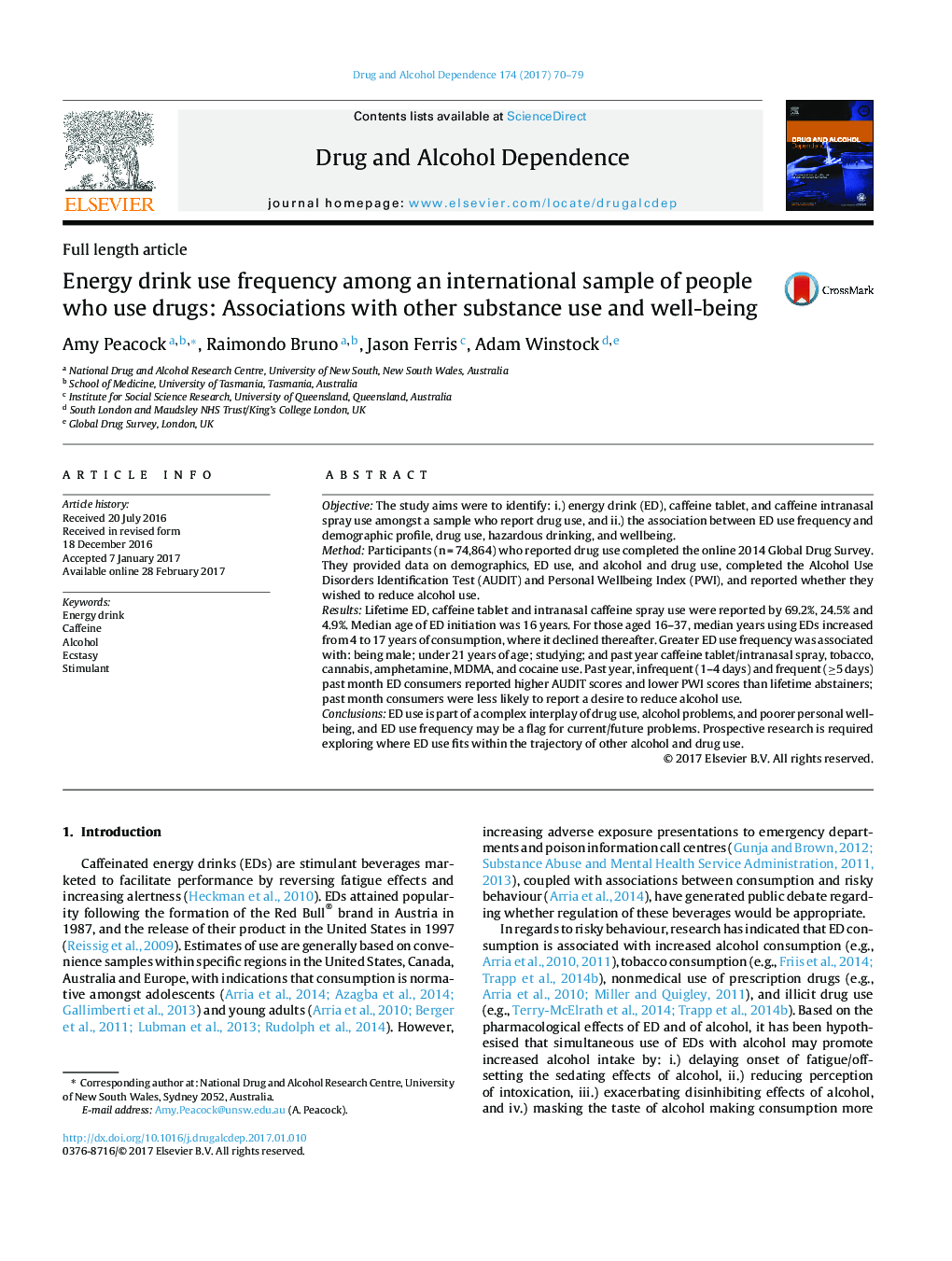| کد مقاله | کد نشریه | سال انتشار | مقاله انگلیسی | نسخه تمام متن |
|---|---|---|---|---|
| 5120124 | 1486117 | 2017 | 10 صفحه PDF | دانلود رایگان |
- 74,864 people who use drugs participated in the online Global Drug Survey 2014.
- Energy drink, caffeine tablet and spray use was reported by 69.2%, 24.5% and 4.9%.
- Greater energy drink use frequency was associated with drug use.
- Greater use frequency was associated with hazardous drinking and poorer wellbeing.
ObjectiveThe study aims were to identify: i.) energy drink (ED), caffeine tablet, and caffeine intranasal spray use amongst a sample who report drug use, and ii.) the association between ED use frequency and demographic profile, drug use, hazardous drinking, and wellbeing.MethodParticipants (n = 74,864) who reported drug use completed the online 2014 Global Drug Survey. They provided data on demographics, ED use, and alcohol and drug use, completed the Alcohol Use Disorders Identification Test (AUDIT) and Personal Wellbeing Index (PWI), and reported whether they wished to reduce alcohol use.ResultsLifetime ED, caffeine tablet and intranasal caffeine spray use were reported by 69.2%, 24.5% and 4.9%. Median age of ED initiation was 16 years. For those aged 16-37, median years using EDs increased from 4 to 17 years of consumption, where it declined thereafter. Greater ED use frequency was associated with: being male; under 21 years of age; studying; and past year caffeine tablet/intranasal spray, tobacco, cannabis, amphetamine, MDMA, and cocaine use. Past year, infrequent (1-4 days) and frequent (â¥5 days) past month ED consumers reported higher AUDIT scores and lower PWI scores than lifetime abstainers; past month consumers were less likely to report a desire to reduce alcohol use.ConclusionsED use is part of a complex interplay of drug use, alcohol problems, and poorer personal wellbeing, and ED use frequency may be a flag for current/future problems. Prospective research is required exploring where ED use fits within the trajectory of other alcohol and drug use.
Journal: Drug and Alcohol Dependence - Volume 174, 1 May 2017, Pages 70-79
